




In the late 2000s, I’d kick off each winter morning by whipping back my curtains, hoping to conjure snow on rooftops. Every third week or so, there it was: proof of my psychic capacities. I fear now that my powers are waning. In negative degrees, I stir soup (heavy on the dill) with my roommates and pretend there’s something besides wind to trek through out there. I write in circles around February, but at the center of it all is Conmag, its surplus and yet insufficient seating marvelously identical to how I first found it three years ago. Seasonal rhythms may fail, but here we are, again. -ES
Today I’d rather dream of mild afternoons 12,000 years ago. A two-ton armadillo lumbering around. The four fossilized skulls of Doedicurus that researchers in South America have found were caved in; they think humans stunned the Volkswagen Beetle-sized creatures with hard blows to the head before they rushed in and tipped them over. They may have sheltered in the cavernous carapaces when the weather turned ugly. When Providence gets too cold, I follow a long path made by a tree-trunk-sized tail through an ancient meadow and find the living dome munching its due. -ZB
Early this morning, still half-asleep, coming off a night of unsettling dreams (spilled printer ink, syntactical errors, a mysterious chill spreading through Conmag...), I saw a shadow near my dresser, somewhere between piles of winter clothing and my stack of new books. It faced me in what I imagined was a sort of benevolent greeting. Hours later, I found a photo in my camera roll I have no memory of taking: Today, 07:39. View from my bed. Empty room: dresser, sweaters, books. I’ve never been haunted before. I think he’s my special Indy ghost. I think he’s friendly. Wish me luck! Happy Valentine’s Day <3 -LKS

MANAGING EDITORS
Zachary Braner
Lucia Kan-Sperling
Ella Spungen
WEEK IN REVIEW
Karlos Bautista
Morgan Varnado
ARTS
Kian Braulik
Corinne Leong
Charlie Medeiros
EPHEMERA
Ayça Ülgen
Livia Weiner
FEATURES
Madeline Canfield
Jane Wang
LITERARY
Ryan Chuang
Evan Donnachie
Anabelle Johnston
METRO
Mark Buckley
Jack Doughty
Rose Houglet
Sacha Sloan
SCIENCE + TECH
Eric Guo
Angela Qian
Katherine Xiong
WORLD
Everest Maya-Tudor
Lily Seltz
X
Claire Chasse
DEAR INDY
Annie Stein
BULLETIN BOARD
Sofia Barnett
Kayla Morrison
SENIOR EDITORS
Sage Jennings
Anabelle Johnston
Corinne Leong
Isaac McKenna
Sacha Sloan
Jane Wang
STAFF WRITERS
Tanvi Anand
Cecilia Barron
Graciela Bautista
Mariana Fajnzylber
Saraphina Forman
Keelin Gaughan
Sarah Goldman
Jonathan Green
Sarah Holloway
Anushka Kataruka
Roza Kavak
Nicole Konecke
Cameron Leo
Abani Neferkara
Justin Scheer
Julia Vaz
Kathy/Siqi Wang
Madeleine Young
COPY CHIEF
Addie Allen
COPY EDITORS / FACT-CHECKERS
Qiaoying Chen
Veronica Dickstein
Eleanor Dushin
Aidan Harbison
Doren Hsiao-Wecksler
Jasmine Li
Rebecca Martin-Welp
Kabir Narayanan
Eleanor Peters
Angelina Rios-Galindo
Taleen Sample
Angela Sha
Jean Wanlass
Michelle Yuan
DEVELOPMENT COORDINATOR
Angela Lian
SOCIAL MEDIA TEAM
Kian Braulik
Angela Lian
Natalie Mitchell
Chinmayi Rajaram
WEB MANAGER
Isaac McKenna
WEB EDITORS
Hadley Dalton
Arman Deendar
Ash Ma
GAMEMAKERS
Alyscia Batista
Anna Wang
COVER COORDINATOR
Zora Gamberg
DESIGN EDITORS
Anna Brinkhuis
Sam Stewart
DESIGNERS
Nicole Ban
Brianna Cheng
Ri Choi
Ashley Guo
Kira Held
Xinyu/Sara Hu
Gina Kang
Amy/Youjin Lim
Andrew Liu
Ash Ma
Jaesun Myung
Tanya Qu
Zoe Rudolph-Larrea
Floria Tsui
Anna Wang
ILLUSTRATION EDITORS
Sophie Foulkes
Izzy Roth-Dishy
ILLUSTRATORS
Sylvie Bartusek
Lucy Carpenter
Bethenie Carriaga
Julia/Shuo Yun Cheng
Avanee Dalmia
Michelle Ding
Nicholas Edwards
Jameson Enriquez
Lillyanne Fisher
Haimeng Ge
Jacob Gong
Ned Kennedy
Elisa Kim
Sarosh Nadeem
Hannah Park
Luca Suarez
Yanning Sun
Anna Wang
Camilla Watson
Iris Wright
Nor Wu
Celine Yeh
Jane Zhou
MVP
Metro <3
The College Hill Independent is printed by TCI in Seekonk, MA
The CollegeHillIndependent is a Providence-based publication written, illustrated, designed, and edited by students from Brown University and the Rhode Island School of Design. Our paper is distributed throughout the East Side, Downtown, and online. The Indy also functions as an open, leftist, consciousness-raising workshop for writers and artists, and from this collaborative space we publish 20 pages of politically-engaged and thoughtful content once a week. We want to create work that is generative for and accountable to the Providence community—a commitment that needs consistent and persistent attention.
While the Indy is predominantly financed by Brown, we independently fundraise to support a stipend program to compensate staff who need financial support, which the University refuses to provide. Beyond making both the spaces we occupy and the creation process more accessible, we must also work to make our writing legible and relevant to our readers.
The Indy strives to disrupt dominant narratives of power. We reject content that perpetuates homophobia, transphobia, xenophobia, misogyny, ableism and/or classism. We aim to produce work that is abolitionist, anti-racist, anti-capitalist, and anti-imperialist, and we want to generate spaces for radical thought, care, and futures. Though these lists are not exhaustive, we challenge each other to be intentional and selfcritical within and beyond the workshop setting, and to find beauty and sustenance in creating and working together.

What does one expect when invited to dine on poetry? Lustrous clamshells leaking lyrics? A sandwich of chewy syllables and soft lettuce letters? Salmon stanzas steeped in a broth of thoughts and sprinkled with zested verse?
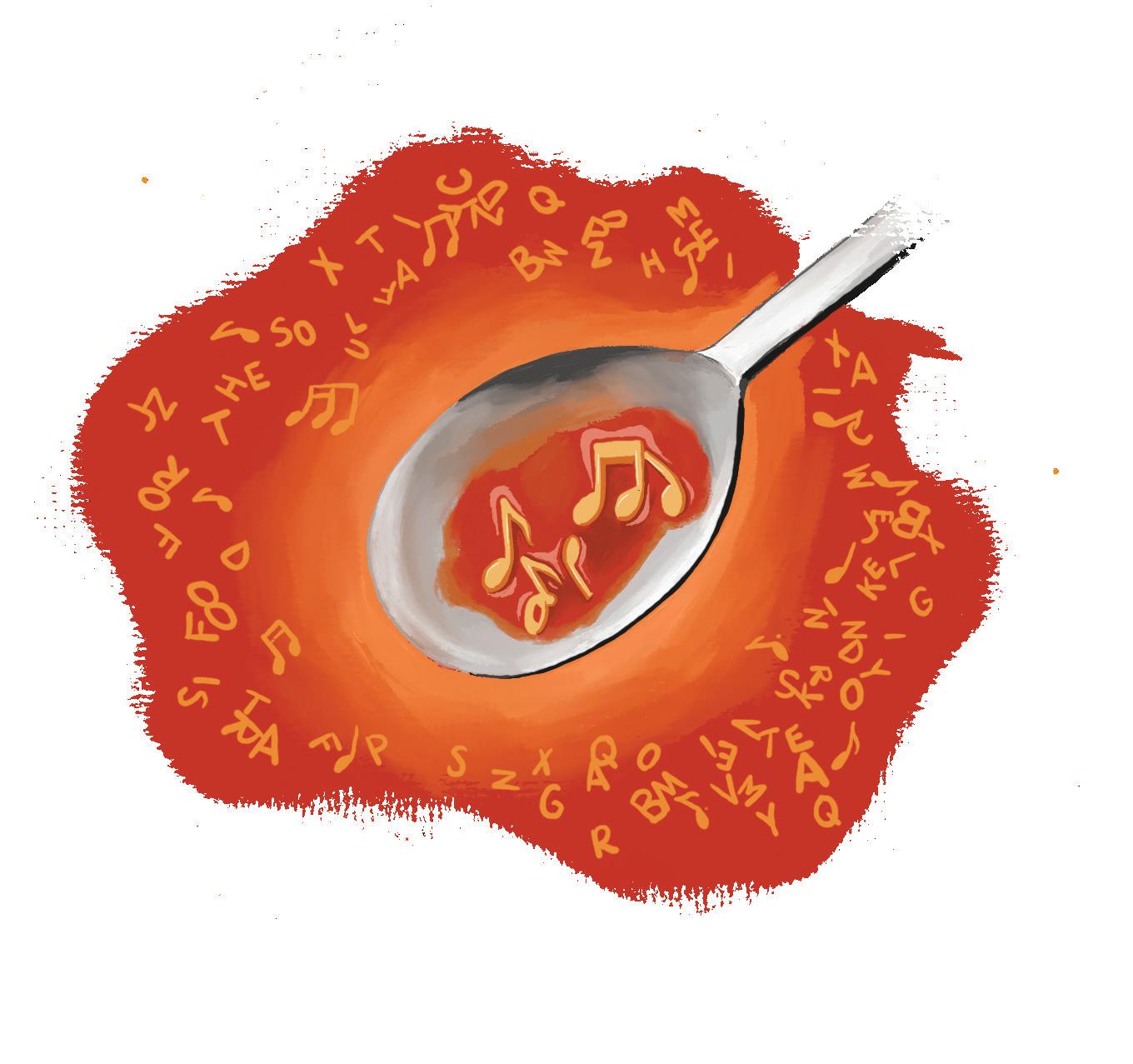
This week, instead of submitting myself to the whims of the dining hall gods, I’ve decided to feed my soul. At 4 p.m., the hour of sustenance for the disorganized, I embark on a profound culinary journey to discover if I, like a starving artist, can substitute art for protein.
What’s on the menu? Eating Poetry by the Aurea Ensemble, a Providence-based group of five musicians, orators, and harmonica players. They promise a performance that blends “the absolute essentialness of art, from ancient times and distant cultures to the present and their great overarching connections,” as my dinner invitation—a flier stapled to a bulletin board— proclaims. In practice, this consists of a 30-piece lineup alternating between authoritative, compelling poetry readings and a spirited harmonica improvisation or a classical string instrument piece.
As neither a music critic (unfortunately, Spotify labeled me as a “Top Charter” this year) nor a gastronomist, I enter St. Martin’s Episcopal Church through the side door and end up directly next to the altar. A warm voice rosins the air; Nigel Gore, award-winning actor and Pawtucket native, pauses his practicing and behind him, a harmonica strikes up a melody, tune swelling like a sea shanty. The inside of the church is warm brown wood and arching stones. Candelabras and gold-threaded tapestries gild the walls behind the performers. Consuelo Sherba, violist and artistic director of Aurea, tunes her instrument, while next to the pulpit, Chris Turner, the tweed-jacketed and necktied harmonica virtuoso, pulls a green brush through his surprisingly full silver hair.
Sitting in the pew, strings straining melodic arcs up through the ceiling, I wonder how to translate the waves of silver sound into words. Upon receiving my invitation to dine, I had skimmed over Aurea’s motivations, unconcerned by the prospect of establishing the connection between music and language which constitutes the group’s secret spice. Now, faced with the challenge myself, I realize the difficulty and nobility of their goal. How to describe a melody? How to describe a soup of notes, thinning and thickening, spilling over the edge of the pulpit and floating lightly, aromatically, to our ears?
I had arrived cloistered in earbuds with tinny speakers. Now, in contrast, the living presence of the music in the room is palpable and palatable: full-bodied instruments, strings and curves, a stream of sound that gushes thick like molasses. I’d forgotten music could be cooked up and served in front of you.

APPETIZER:
It’s thirty minutes before the performance and the devourers and devout are already trickling in. They populate the pews: gunmetal hair; earth-toned scarves and hats; puffer jackets, L.L. Bean; the occasional cane and vest; two berets. From the pew in front of me, I hear people asking each other’s names; I gather that some of them have been coming to these performances for twenty years. Almost 70 people have arrived before Turner takes a deep breath and jubilantly releases, “From the doorsill of heaven comes the word: WELCOME!”
“Welcome!” the performers repeat one by one. Then Turner launches into a fervid, passionately seasoned solo, wielding his harmonica with an expertise I have never witnessed. The harmony shakes and trembles; notes pop like onions in a pan. His hands contort like he’s producing complicated bird calls, and despite the dangerous freedom that improvisation provides, his refrains repeat, unwinding and zipping back up. Loud as a trumpet, warbling like a jazz solo, the piece climbs up and back down, at times squawking like a golden-beaked duck, at others, lowering and warping into an alien echo that calls to mind underground raves. Better than any EDM DJ, Turner expands and suffocates his sound, stretching the last harmonic echoes into the air like a note bellowed through a horn. Then, without hesitation, Turner inhales once deeply and turns to his first reading: “Why did they shut me out of heaven? Did I play too loud?” Candor and reflection reign in his kingdom of poetic delivery.
FIRST COURSE:
But as Sherba tells me, “it’s not a funny program, necessarily…it’s about life, basically. It does have a trajectory; I feel it makes sense. You hear the words repeating. You’ll hear something repeat later in a different poem, in a different guise.” Into the soaring harmonica improvisations and reverberating string pieces, notes of red, of longing and stillness, of ink bleeding joyfully from mouths, seep like syrup into a sponge. As Turner reads, we see a daughter become a night woman of sharp taste. Life evaporates like an essence. The afternoon arrives mournful and dusty. When Gore picks up the poetry, Turner returns to his instrument, harmonica blooming and retreating back into silence beneath the voice imploring, “Don’t gossip about my dreams! Without them, how could I admire you?” Rather than rendering them cliché, the sincerity and viscerality of the readings establish a connection between art and sustenance, consumption and emotion, the immersion that “eating poetry” entails. Gore reads from How to Cut a Pomegranate by Imtiaz Dharker: “Never cut a pomegranate
through the heart / it will weep blood. / Treat it delicately with respect.” And in exquisite mourning, Sherba plucks notes on the viola in Danzas Latino Americanas. These singular globes of sound echo like knocks on doors, steps pattering up dark stairs, drops of lemon essence detonating on a wooden tabletop.
SECOND COURSE:
The harmonica improvisations of Turner have sizzled with the attitude of spices. The tender spoken word poetry constituted the meat of the performance. Now, the string duet and trio provide the thick-cut bread of this meal. Traditional and spongy, the melodies of Mozart and José Elizondo rise under the strings of Sherba, Alexey Shabalin on the violin, and Emmanuel Feldman on the cello. In Serenade in C major, Op. 10, the high violin of Shabalin stands out, skipping along golden scales, leading the piece to climaxes and then dissolving them into small cubes of notes that melt in the mouth. The cello plucks a steady march as violin and viola twine together. Fingers dart over strings with streamlined, oiled dexterity; heads tilt in tandem with the saw of bows. The music ripples in the air like a ribbon undulating. As a previous participant in a quartet whose performances had the quality of a slow-motion landslide, I am impressed. Both duet and trio are a soothing picture of mastery on the altar, tapestry-framed, tableau of intelligent and liquid movements.
DESSERT:
The last note shivers triumphantly; we drink it up until the bowl of the arched ceiling is emptied of sound. Parishioners rise in applause. Next to me, a woman in an orange jacket moves to speak with the cellist. A violist herself, she has been coming for years, she tells me, which seems to be the norm. Was her appetite for poetry satisfied tonight? She shares: “I love the way the literature and the music was woven together. And it was with music that came from so many deep sources.” And about the harmonica? “I’ve heard [Turner] play for a number of years,” she says, smiling. “Every time I hear him play I just feel so hopeful, and so happy, like there’s hope for the future.”
Cue immediate seizure of harmonica, frenzied and jumping, launching us from our place in the church back out into the night. Strung together like a necklace of pomegranate seeds, we reenter the world, glazed in melodies, sated with words.
Ink runs from the corners of my mouth. There is no happiness like mine.
I have been eating poetry.
-Mark Strand
The late Narragansett ethnohistorian Ella Sekatau, mother of John Brown, taught native studies at Plimoth Patuxet’s 17th-century homesite. She had built the recreated Narragansett village from memory, constructing the wigwams and vegetable gardens that today line the centuries-old oaks. These days, John Brown, 64, is the Tribal Medicine Man and the founder and head of the Office of Historic Preservation of the Narragansett Indian Tribe.
Upon returning from school one afternoon in 1974, Mr. Brown told the College Hill Independent, he walked past his mother’s workstation and encountered a man on his knees before her. The stranger was “genuflecting and rolling around on the ground,” claiming that spirits were after him. Mr. Brown grabbed hold of a large stick, but when she saw her son, Dr. Sekatau just held up her hand.
That man—former Brown University Provost William S. Simmons—stood up and shook Mr. Brown’s hand before introducing himself. “From
the instant I saw that man,” Brown said, “I never liked him.”
+++
Simmons is one of a long line of Brown University anthropologists who have had ties with and published research on the local Narragansett tribe. The university’s own Haffenreffer Museum of Anthropology was named for one of these men, Rudolf F. Haffenreffer Jr. Built on Mount Hope in what is now the town of Bristol, the Haffenreffer Museum at first exhibited only Haffenreffer Jr.’s ethnographic collections. After his death in the 1950s, the Haffenreffer family donated the museum and its contents to Brown University— in direct opposition to the demands of the Indigenous community.
The Native American Graves Protection and Repatriation Act (NAGPRA), passed in 1990, provided a framework for federally-funded institutions to effectively repatriate Native American cultural items to their lineal descendants. But three decades after this landmark human rights
legislation was passed, the nation’s most prominent museums and universities have failed to return the remains of over 100,000 people, according to a database published in January by nonprofit newsroom ProPublica.

Today, the Haffenreffer Museum contains an unknown amount of Native American remains. Professor Robert Preucel, director of the Haffenreffer Museum, told the Indy that the museum is in possession of “10 Narragansett ancestors [human remains] and 24 associated funerary objects.”
According to the ProPublica database, which aggregates institution-reported public records, the Haffenreffer Museum is still in possession of at least 99 Native American remains. This number includes the 10 remains that Preucel mentioned; this subset is what the Haffenreffer “made available for return” in a Notice of Inventory Completion filed with the government in 2018. Under NAGPRA, when an institution makes items “available for return,” it is supposed to mean that the institution has filed an inventory notice that viably associates the listed items with specific Indigenous communities.
But this bureaucratic process doesn’t always result in a successful repatriation. “Made available?” Mr. Brown said. “I’ve never seen them.” And the numbers presented by the ProPublica tool are, at best, a minimum estimate, as some institutions have failed to report remains in their possession.
“Who knows where the rest of the bones are,” Cora Peirce, a field investigator for Mr. Brown’s office and a member of the Pocasset Wampanoag Tribe of Massachusetts and Rhode Island, told the Indy
Asked about the estimated 90 percent of Native American human remains that the Haffenreffer has still not “made available” for repatriation, Mr. Preucel said, “I don’t know why they frame it that way because that’s not correct, at least in our case. We are happy to repatriate and are working right now to repatriate all of our Native American human remains.”
But John Brown told the Indy that Thierry Gentis, the Haffenreffer Museum’s head curator and NAGPRA coordinator, has refused to meet with Mr. Brown for nearly three decades. Apart from an attempted consultation in the mid-90s that Mr. Brown left in frustration after 15 minutes, Mr. Brown says he has “had no meaningful contact with anyone” from the Haffenreffer. He also said that he was unaware of the 2018 inventory notice, and was never consulted—despite the notice’s claim that its inventory was made “in consultation with representatives of the Narragansett Indian Tribe.”
Mr. Gentis declined to comment for this article, instead referring the Indy to Mr. Preucel.
Mr. Preucel told the Indy in an email that Thierry Gentis “consulted with Mr. Brown” at “multiple points in the years prior to publication” of the 2018 inventory notice. But Mr. Preucel declined to provide evidence of these pre-publication consultations, citing confidentiality requirements he said are part of the inventories section of NAGPRA (an Indy review of the statute found no confidentiality requirement for private institutions).
However, Mr. Preucel did provide the Indy with two emails from the Haffenreffer: one sent to Narragansett Tribe Chief Sachem Anthony Dean Stanton in September 2018, and the other sent to John Brown in October 2021. The first email, sent by Mr. Gentis two days after he filed the inventory notice, briefly notified the chief of the filing and offered Mr. Gentis’s phone number. Half an hour later, an email sent from Chief Stanton’s account acknowledged the filing, though Mr. Brown told the Indy that the chief does not remember sending this email.
The second email, sent by Mr. Preucel to Mr. Brown, thanked him for meeting with Brown University’s land acknowledgment group, expressed hope for future collaborations, and
asked for Mr. Brown’s “advice on how best to proceed” with the “NAGPRA case,” which had been open since 2018. But Mr. Brown told the Indy that he missed the email in his packed inbox, and Mr. Preucel did not follow up.
“Because we received no response to either communication,” Mr. Preucel wrote in an email to the Indy, “our understanding was that they were not yet ready to proceed.”
After receiving a list of questions from the Indy this week, Mr. Preucel reached out to Mr. Brown to apologize and reaffirm the Haffenreffer’s desire to meet with him.
Brown University has repatriated items to other tribes. For example, in February 2022, Mr. Gentis filed a “Notice of Intent to Repatriate Cultural Items” that described the Haffenreffer Museum’s successful consultation over a “catlinite pipe bowl and wood pipe” with the Stockbridge-Munsee Community of Shawano County, Wisconsin.
telling anybody anything about us.”
Later in his life, Mr. Brown said he met Simmons again, when he was an administrator, in his university office. “I asked him when he was going to do the right thing,” Mr. Brown said. “He thought it was funny.”
“[Simmons] was a thief, a liar, a purveyor of falsities, a prevaricator, and a robber of graves,” he continued. “That’s the man that Thierry Gentis and Russell Carey and all those other people followed. I don’t have a golden review for men who do that kind of stuff and then lie about it. But they were shielded by the power and the prestige of Brown University.”
NAGPRA was intended to compel institutions to repatriate their stolen belongings in consultation with Native American tribes. But the legislation’s biggest flaw is that museums and academic institutions have the final authority to “decide cultural affiliation,” Dr. Donna Rae Gould—the Nipmuc Nation of Massachusetts’s repatriation representative and executive director of Brown University’s Native American and Indigenous Studies Initiative— told the Indy in an email.
“Too many institutions have used this to determine that ancestors are ‘culturally unidentifiable’ to resist repatriation,” she wrote. “In my opinion, this was the biggest compromise made when the Act was initially passed in 1990.”
NAGPRA’s verbiage provides institutions with a rationalization for keeping remains and cultural items on the shelves. Institutions are not required to begin the repatriation process for collections designated as “culturally unidentifiable.”
+++
William Simmons, who died in 2018, was a pillar of Brown University: once an undergraduate, he eventually became an anthropology professor, a department chair, and even a provost and executive vice president. He earned his master’s and doctoral degrees from Harvard University in the 1960s, centering his research on the Native American communities of New England. His 1989 book, The Narragansett (Indians of North America), was celebrated as an accomplishment in anthropology and historical scholarship. The information used to write his book largely came from the Narragansett people themselves— specifically, John Brown’s family.
“He took that knowledge from my mother and put it in his book,” Mr. Brown said. “It became his knowledge. By that time, we stopped
NAGPRA’s deference to institutional decision-making also means that the institutions alone determine affiliation when conflicting claims arise. In multiple interviews with the Indy, Mr. Brown alleged that Brown University has relied on counterclaims from groups with no credible connection to items in the Haffenreffer in order to delay repatriation. By creating a conflict of interest, he said, certain remains and objects can be held indefinitely in the museum’s collection.
The university’s acceptance of such counterclaims is also beneficial to the groups because the badge of institutional recognition can make it easier to obtain land trusts from the state, Mr. Brown suggested. “They served one another’s purpose.”
Haffenreffer anthropologists “helped create these people,” he said. “They gave them life and gave them substance. If they were a historic Indian tribe, we would have backed them. But
“Too many institutions have used this to determine that ancestors are ‘culturally unidentifiable’ to resist repatriation,” she wrote. “In my opinion, this was the biggest compromise made when the Act was initially passed in 1990.”
they are people of unknown origin. Why do people want to be tribal or Indigenous when they’re not?” Mr. Brown believes the university is aware of the fictitious nature of some of these claims. “They would have to be. Brown is this institution of great learning. You mean to tell me they don’t know the law? Or the history? There’s no history there. None.”
Mr. Preucel did not respond to questions about the counter-claims. “We greatly value our relationship with the Narragansett Tribe,” he said. “We remain ready and eager to work with the tribe to complete repatriation.”
What’s more, Mr. Brown explained, institutions determining cultural affiliation often consult item catalogs that are based on skewed methodologies. Documented records reflect a largely European colonial perspective, leaving out oral histories and archaeological links used by Indigenous communities. “The catalogs are arbitrary,” Mr. Brown said. “I’ve yet to see an archaeologist or anthropologist or so-called historian have more knowledge about the tribal people in this area than the tribal people in this area.”
The Ivy League as a whole is built upon legacies of stolen land and stolen labor; Mr. Brown reflected on the proclaimed ‘civilizing’ logic of higher education that was designed not only to educate but to institutionalize Indigenous people. The erasure of Indigenous identities and dispossession of Native American land has been continually perpetuated and protected under the veil of academia. The lack of action on Brown University’s part to acknowledge this history belies its proclaimed commitment to “strengthening relationships with Indigenous peoples of this region,” as stated in the university’s 2022 Land Acknowledgement Commitments.
In a statement, the student organization Natives@Brown said they “support the ongoing efforts by the Narragansett Tribe.”
“Invariably, this work doesn’t change,” Mr. Brown said. “The people change. They retire, so forth. But the messaging and the methodology, that has not changed.”
Asked about the decades-long delay in attempting to reach Mr. Brown, Mr. Preucel told the Indy that the repatriation process has been stalled by staffing issues at the Haffenreffer Museum. Currently, Thierry Gentis acts as both the NAGPRA coordinator and head curator, limiting the time he can spend on repatriation work, Mr. Preucel said. (On the federal level, the U.S. Congress never sufficiently funded the office responsible for overseeing NAGPRA’s implementation.)
“We are hoping to make another hire,” Mr. Preucel continued. “I am speaking to the administration right now as we speak.” He added that the university has hired a consultant, Jan Bernstein, of the Colorado-based NAGPRA consulting firm Bernstein & Associates, to help guide the process of repatriation. According to its website, Bernstein & Associates in 2021 worked with the University of California, Berkeley, which has yet to return at least 9,000 Native American human remains, as well as over 200,000 associated funerary objects, according to the ProPublica database.
+++
In the state of Rhode Island, there is no administrative or legislative process for the acknowledgment of historical Indigenous tribes. The last piece of legislation referencing tribal recognition was passed in 1983, when the Narragansett Indian Tribe received federal recognition and began working to claim their land under a trust.
In 2007, the First Circuit Court of Appeals ruled that the Bureau of Indian Affairs could place a 31-acre parcel of land in trust for the Narragansett nation. In response, the state of Rhode Island sued the Department of the Interior, seeking to maintain control of these tribal lands—and lost. Indigenous communities around the country had supported the Narragansett’s acquisition of the land trust; the court’s decision to affirm Indigenous rights under federal law was an important step in reinterpreting statutory language to include native sovereignty. However, it also illuminated the lengths to which state authorities will go
in order to disregard and discredit the rights of Indigenous people.
This past year, in response to feedback from numerous Indigenous communities, the Department of the Interior proposed a series of revisions to streamline the repatriation process. These revisions would prompt more transparency from institutions about their collections and emphasize Indigenous groups as the authorities on cultural heritage.
+++
The visibility of repatriation efforts in the recent past has helped expose the violent history of some of the country’s most powerful and prestigious institutions. “This is less about recognizing or understanding heritage as it is about recognizing human rights violations,” said Dr. Rae Gould.
The Haffenreffer’s relationship with the Narragansett community serves as a reminder that museums and academic institutions are not neutral. The desecration of Indigenous people’s resting places has created a deep cultural pain that will only continue until the foundations of these institutions are rewritten.
“We are a patient people,” Mr. Brown said. “We were here when the people came over and we’ll be here when they leave.”
+++
This story comprises the preliminary results of an ongoing Indy investigation into the relationship between Brown University and the Narragansett Indian Tribe. We expect to report further on this topic in the future.
KEELIN GAUGHAN B’25 doesn’t want to become part of the problem.
SACHA SLOAN B’23.5 hopes for a stronger, more effective NAGPRA.
I’VE YET TO SEE AN ARCHAEOLOGIST OR ANTHROPOLOGIST OR SO-CALLED HISTORIAN HAVE MORE KNOWLEDGE ABOUT THE TRIBAL PEOPLE IN THIS AREA THAN THE TRIBAL PEOPLE IN THIS AREA.
- JOHN BROWN
Instructions: Cut it out and give it to your Balentine <3


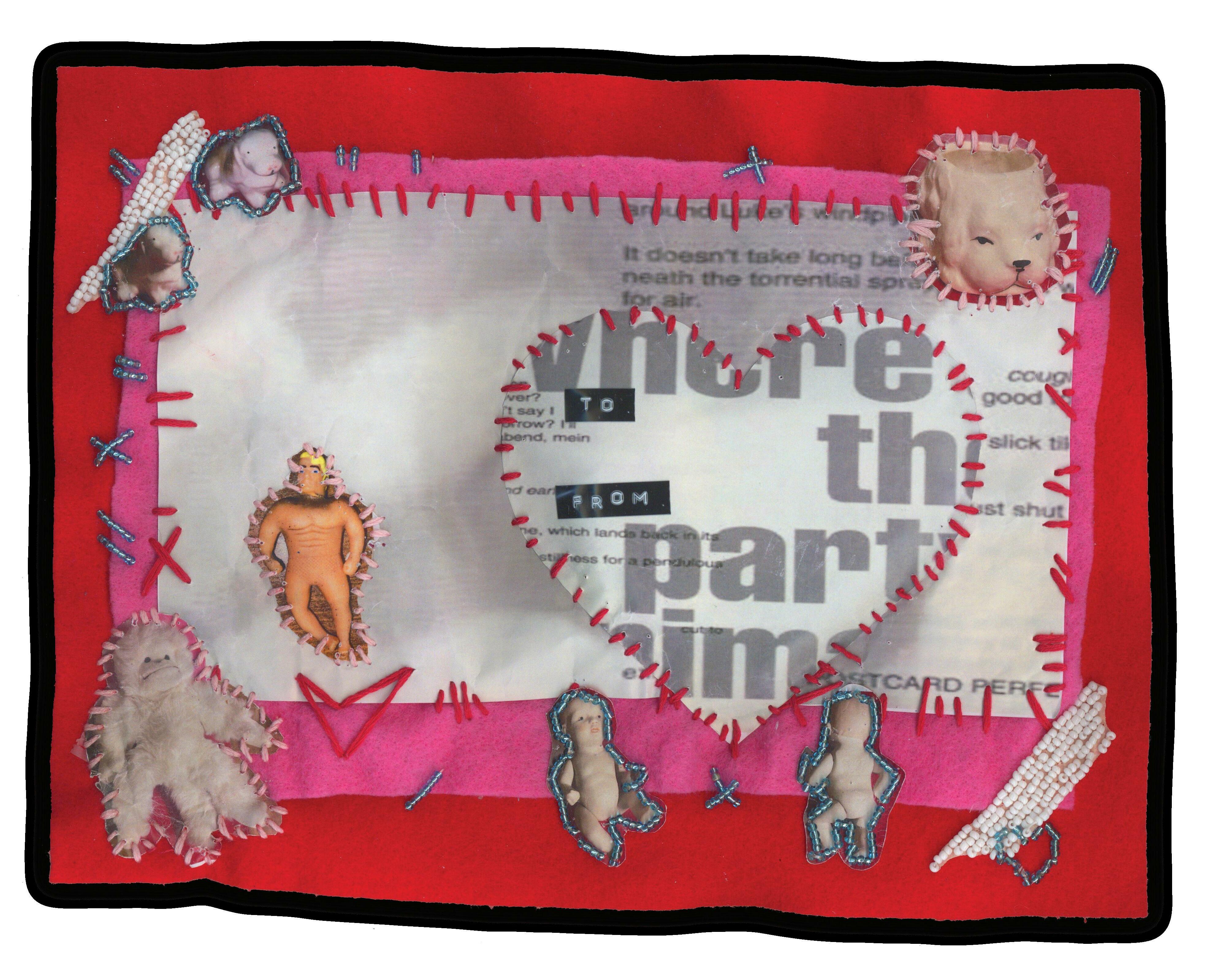

Felt,paper,beads,tape, embroiderythread,labels

Over the break, we went home. We confronted—we faced—and then we turned right back around. Now we reflect on those who we have again just left, the ones who love us and raised us and are always waiting for us to return. Preoccupied with new visions of old settings, we asked each other to elucidate revelations of this time, ones which inevitably centered on the world of family and the question of home. In its absence, the answer remains elusive.
My mother cried in the kitchen, crumpling the dish towel on the counter as quiet tears snuck down her cheeks. I almost didn’t notice, too busy placing each dish and utensil where they belonged among the shelves. The dishwasher door hung open, still half full—I filled the silence with a hug. Soon after, her tears faded to laughter and with the dishwasher empty, we loitered in the kitchen before saying goodnight. What stuck with me nights later wasn’t what had upset her, but that she had let herself show it.

My mom has been a woman of composure for as long as I have known her. Her father was a military man, commanding officer of a house of eight. He showed kindness, but not weakness, and I found my mother walking in his footsteps. She plans ahead, arrives in advance, and is seldom caught unprepared for the task at hand. It’s the example she set for me, as it had been set for her. That composure also meant, when I was young, she rarely let anything that bothered her slip through. I hardly ever knew when she was upset. Only after I was tucked into bed or on the bus to school, I imagine, would those tears show.
When I was newly born, as my mother cradled me in her arms, she gave me my name so I would know that my history is more than what they would tell me. That, in my mother’s dreams, when I met her 6th grade history teacher, I could cite my name and tell her that our history is so much more than the period of enslavement. I can only imagine how my mother worried when she held me. Looking back on all the world had thrown at her, and how its eyes would now be set on me. With me swaddled in a blanket under the dimmed lights of the hospital room, she felt a sense of duty, as I imagine all parents do.
Then, I grew up a little, shape-shifted into an
acne-faced high school freshman before her eyes. Watching movies on a lazy Sunday, my mother and I sinking into the couch side by side, she told me she couldn’t stand the possibility of me being bullied in school. How she worried when she sent me off to Pre-K to fend for myself all those years ago! It caught me off guard in between the lines of the Hallmark movie that droned on in the background. I never knew she had felt that way, a big smile and too many kisses on the cheek never betrayed her disquiet. Her excitement for each one of my first days of school never dwindled, despite the unknowns.
Fireworks bloomed in the night sky on New Year’s Eve. I had grown a bit more then, counting down the days till I left for college. Our balcony felt like it hung in the air, frozen mid-fall with no start or end. It’s hard to say why the moment felt timeless, with the new year looming to symbolize the opposite. We found ourselves in a bubble, the hazy in-between of one year and another. Our faces, lit by bursts of shimmering light, peered out from behind that gap.
There, my mother told me how she didn’t like to cry in front of me. That she wouldn’t show it when she was upset or bothered, whether by big things or small. I didn’t get it at first. I told her there was no need, that of course I would want to know if she was upset. The fireworks continued to fade in and out of existence as we watched, their distant drumming her only reply. My hands were going numb on the metal railing, and when I went back inside to warm them, the glare on the windows hid the fireworks behind the glass. They would be over soon anyway.
In time, I felt like I didn’t need to ask her
why, I felt like I could already understand. Looking back, for most of my life it has been the two of us. Her days were full of early morning starts and late nights packed with emails. Business trips pulled her far from home and even moved us abroad. A single mother, she had to manage it all, manage herself, too. To lead through example, to keep composure, and, of course, to shield her child from the hardships of life.
I’m sure that some part of my speculation is true, that she concealed those emotions in the way that every parent protects their child. In the kitchen, I believe, she let herself cry because my childhood was ending. It really already has. When I was young, it felt like everything would last forever, but that illusion of permanence would eventually slip through my fingers, and naturally, my mother knew that as well. Those moments of hiding her tears weren’t to protect me from earth-shaking secrets or insurmountable struggles, things so scary they begged to be shut away. She hid her tears to prolong the fleeting moment of my childhood bliss, for just a little bit longer. In the kitchen, standing at the end of childhood, my mother’s head rests on my shoulder as she cries. She rests from a struggle inevitably lost to time. Her baby boy, whose first tool she gave him to protect himself was a name, now comforts her quietly.
It’s an old revelation for a new year. The precursor is that I cried in the days leading up to my flight home because I wasn’t sure what to expect when I got back. I had spent a long time thinking about my consumerist habits, my dreams, and the way my insatiability followed me everywhere, like it does us all. A few classic examples:
At home, wanting to be anywhere else
Anywhere else, missing the comforts of home
Having bought the “last coat I would ever need,” finding another one

I arrived home feeling a lot of guilt and trepidation. My mother was angry with me, she thought I hadn’t been treating her well, I thought I was doing my best. I had tacked Applied Math, that last minute decision, onto my Literary Arts concentration, and I was ready to cut through my insufferably humanistic education with concerns revolving around numbers, things I didn’t really believe in, to turn my mother’s tireless efforts, her youth, and her emotional upheaval into things well spent. I knew she was unhappy with me, and I wasn’t ready to seek forgiveness without action.
Strangely, unexpectedly, on one of our routine morning runs, with the triangular formation of my mother at the head and my sister and I tailing, each footfall drummed into me the feeling that this little world containing my family had healed while I was gone. It was raining, and we stopped periodically on the way back to our house because the dandelions on the side of the road were in violent bloom, and my mother said that our pet rabbit enjoyed eating them, roots especially. This from the same mother who, in the months before I left, had developed a kind of jealousy complex regarding the rabbit, to whom she felt my sister and I offered more affection than we did her. We ordered Japanese for dinner, and my sister mentioned how they hadn’t eaten out since I went to school. “We should go to the mall before you leave,” my mother said. Of course they hadn’t been back there in the length of a semester.
I began to imagine myself as a black hole. Craving restaurant food, clothing, understanding, closure, and always to leave, everything slipping down the gullet. The suitcase I packed for wintering the break was certainly enough for four weeks away from my new “school home,” but I was surprised, met with an entire forgotten wardrobe when I got back. Barely space in the closet for that coat and then the other. How had I accumulated so much, and how had it slid past me, and why, in my absence, had that accumulation slowed to a trickle, how had my mother and sister learned to love each other and the rabbit at the same time, and how had the morning runs stopped being something my sister and I faked sickness to get out of and turned into a treasured little meditation, from where did this harmony descend, or resume?
“I’m trying,” I told my mother.
“It’s not about that,” she said. “What you owe me is love.”
That month was the most peaceful I had ever felt at home. After the breakdown on the first night, there were no more fights, only soft requests—come to the grocery store with me? shall we take a walk together?—and soft acquiescence. I thought about what made this kind of assent so difficult before, why the pressure of a schedule upended by a grocery outing had made me so angry and resistant, why I couldn’t find it in myself to call my mother during the months I was away unless impatiently prompted. I was too busy cooking with friends, making schemes, planning out my grandiose future where I would
rise above into the annals of constellations.
Each mistake was related. I wanted more, thought I deserved more. Who was it that tricked me into believing there was more than my mother, my sister, the home she cultivated for us, the dailiness, what we owed to each other? In truth, the grandest thing I can give to anyone is my love. I owe her everything.
I ran in circles around myself. This home and then the “other.” In mornings, I woke up in my old bed, a hallway away from the people who love me even more than I love myself, who are thinking of me always. I used to think that was a burden, to be thought of. When I first left, it put me into a sour mood to be reminded that my sister wanted me to text her, that these relationships were to be maintained, “I have a problem with object permanence,” I said. How callous of me.
Now I am back at school. In the wee hours on my first night back, I cried again. I unpacked and shifted my things from drawer to drawer, searching for the best way to position them, I
wanted to approximate the love I felt when I first unwrapped the box and cut off the tags. Or the love from down that hall. I couldn’t sleep, so I turned the lights back on. My room in the apartment, its robin’s-egg walls that hold so little. I am mourning this distance from home, which is unlivable.
JANE WANG B’24 lives for love.
content warning: death, abuse, alcoholism, family estrangement
I saw sunshine ten times over last week. It was while I was watching Shrek. I was sitting and watching Shrek and Donkey and the way they conquer the challenges and fall in love with the enemy—then all of a sudden my doorbell rang.
I brought the remote to my chin and pressed off the box with me and Shrek and Donkey and their enemies inside. Around me hung my drapes and my droves of loose cables and dust. I stood and began the walk to Door. I pushed through couches and grapes and Legos and photos. Door stood nervous but strong.
“Who’s there?” I asked.
“It’s the Salesman, Dave,” Door responded. I peeked through the peephole and saw the Salesman who looked drowsy and heavy. He was a skinny man who was drowsy and heavy.


“Hello?” I asked through Door. There was no
pressed. She is okay. She’s older now with a boyfriend and a job. A house and a dog also. I rarely see her though. She must be doing okay. I saw her for her birthday—I went and surprised her at her apartment in the city. But that was a few years ago now. Julia didn’t seem to need much of a connection. That is probably best for her. I think that is best for her. Things did get hard for us after Larry passed. At first I thought things must get easier—but I got distant. Julia grew up and I got distant and I rarely see her.
“Dave…don’t,” Door said calmly.
“How’s Julia, Dave?” the Salesman persisted.
“She’s okay.” I remember when Julia was a kid she would make Larry and me cookies. Sometimes they were salty, and sometimes they were chocolatey, and sometimes they tasted of rosemary and time with wind in my hair as a kid on the beach with the warm sand on my hands.
“How old are you now Dave? You’re getting old, aren’t you Dave?” the Salesman prodded.
“Good Dave—keep him out.” Door reassured me.
“I’m 70.” Things have begun to slow down. The long wait seems to be coming to an end. I didn’t want to think of it too much. I did think of it sometimes. All my memories taste so good and salty and wet and aged. I missed Larry and Julia. We used to be so nice and all together. In the warm sun on the ice skating rink in our cozy socks on the bed. In the cold winter months on the sleds in the grass next to the butterflies and the roses in our cozy socks on the bed. And the picnic blanket with my back on it with Larry’s head on my chest and Julia in my arm in our cozy socks on the bed. Watching Shrek in our cozy socks on the bed—
“So a few more years left?” the Salesman asked.
response. The Salesman looked up and through the peephole and smiled at me with a wide smile. His eyes were glossed over and wanting. His teeth were yellow and brown. The Salesman picked up his heavy knuckle and knocked on Door. Door stood strong.
“How are things going for you Dave?” the Salesman asked, staring through Door’s peephole.
“Things are fine, thank you,” I responded.
“It’s been a while, hasn’t it Dave,” the Salesman continued. “Five years?”

“Don’t let him in, Dave,” Door whispered.
“Five years. Yes.”
“Can I come in?”
“Dave—do not,” Door whispered aggressively.
“Why are you here?” Door was right, I didn’t want the Salesman to come in. He is always up to something.
“I’m here to check in on you Dave.”
“He’s here to sell you something Dave—don’t trust him,” Door said.
“I’m doing fine—thank you.” I am doing fine. I took the dog on a walk yesterday. And I went to the bakery and had a coffee on the porch. And I enjoyed it. I watched the sailboats wander the bay and I was calm. I felt the way it was when the wind and sun went through my hair and on my skin. I glanced at the newspaper and had a coffee on the porch. I am doing fine.
“How have things been since Larry?” the Salesman asked. Door looked at me worried.
“Don’t let him in, Dave,” Door insisted quietly. He knew I would cave if I thought too long about anything.
“Things have been fine—thank you.” Things have been okay. It was hard to fully move on but I usually don’t like to think about it.
“Is your kid doing okay Dave?” the Salesman
“Probably,” I said, with a hint of something sour on my tongue.
“Don’t give in, Dave,” Door said, still calm. Door knew this all. He’d known me so well ever since I was a kid. I remember him helping me with my Legos. He would help me put them together and place them around. When I grew up he would help me organize the cables and sweep the dust. Door was here when I met Larry. Door was here when we had Julia. Door was here when she moved out. Door was here when I would go out onto the porch and watch the sailboats and newspapers with a coffee in hand. Feeling the wind on my skin and the sun in my hair. But Door was also here for tigers all between.
Door was here when Larry grew twisted and began to grumble. He was here when the roars grew too loud and the claws grew too sharp. He was here when Julia grew up and got hurt and cold. He was here when Julia left. He was here when I was alone, on the porch, in the cold. And he would comfort me and tell me about how Larry didn’t mean it.
“You sound upset Dave.”
“You sound fine to me Dave,” Door whispered.
“Do you feel guilty Dave?”
“I’m fine.” The Salesman came to me five years ago presumably when he had heard of my troubles with Larry. Five years ago I was drunk and I was tired. And angry most of all. It was the
first time I had seen him since I had been a teen. When he knocked I was drunk and tired. Door was asleep. I let him in and he had me get a new product he was selling—he called it The Stroke. I wasn’t sure what it was but he said it would fix all my problems. I was drunk and tired and angry. And the tigers all between were roaring. Larry was asleep in our bed that I so rarely slept in. I so rarely slept.
The next day, the doctors said, “It seems he had a stroke while he slept. I am sorry for your loss.”
I told them I was sorry—for the scratches and the bite marks, for the torn limbs and the
bones everywhere. I told them I was drunk and tired and that Door was asleep. I told them I was sorry and that I didn’t mean it.
“Strokes can happen to anyone at any time.” The doctors reassured me it wasn’t my fault. Door reassured me it wasn’t my fault—he said I was drunk and I was tired and he said that if he were awake he would have stayed closed.
I called Julia to tell her what had happened. I said he had a stroke and I said there was nothing I could have done and I said I was sorry and that I was tired and angry.
“Okay.” She took a deep breath. She was always too young.
For a moment I thought my problems would go away and that things must get easier. But I got sober and I got sleep. Things got lonely. I grew distant. Julia grew up.
“You’re fine Dave. You are fine,” Door reassured. It felt good that Door was so always reassuring.
“Your problems have a solution Dave.”
“I don’t have problems.” I don’t have problems. I don’t have a job, I don’t have a wife, I don’t have a husband. I don’t have problems. I have a house and a porch and a coffee cup. I have a nice view of the sailboats and the newspaper. I also have Door. I really do not have problems.
“It’s a new thing they are calling a Heart Attack, Dave. Patent pending. Results are beyond belief.” Of course the Salesman was here to sell
something. He can’t help himself.
“No thank you, I don’t have any money.” I did think about it for a minute. If it were free I might try it out. It couldn’t hurt. But it probably wasn’t free.
“Don’t trust him,” Door said to me.
“You really should take a look at these charts Dave. They have great numbers on them—it shows nothing but the unprecedented success of the Heart Attack. Patent pending.” Numbers are irrefutable. The last time I saw numbers was this morning when I was making myself a bowl of oatmeal. Door read the box and told me how much water and oats to pour in and how long to heat up the bowl. The numbers were irrefutable. The oatmeal was delicious. “It is free, Dave. The Heart Attack doesn’t cost a penny.”
“Take a look at these charts with numbers on them.” The Salesman slid the charts with numbers on them under the door. I looked at the numbers. I couldn’t understand what was good about them. I looked at Door and whispered.

“I can’t tell if they’re good.”
“What do you mean? Let me see,” he whispered back. I turned the charts toward Door. He looked at the charts with a skeptical eye. He looked through them scrupulously. He was probably looking at the way they go up as time continues on. He was probably looking at how nearly all of them showed drastic improvements to dire problems. He was probably reading the key and the title and the axis. He was running calculations and analyzing the variables. After thinking about it for a long time he looked back at me. He stood strong but nervous.
“Those are good numbers. Dave these are good numbers,” Door reassured.
Door swung open to reveal the Salesman. Grinning as always with a package now in his hand. There you are Dave. You look so old Dave. Here take the package. Take the package.
I reached out my hand and through Door’s frame and into the cold outside air. I looked past the Salesman and into the water and sailboats beyond. Into the world of the Salesman where nobody forgives you for anything ever. Not even Dave. My hand shuddered a bit as I reached toward the package containing the Heart Attack Patent pending.
“How is it free?” I inquired.
“You really must look at these charts.”
There was silence as I stepped a bit away from Door. I saw his face and he looked worried.
“What?” I whispered to Door. He looked worried.
“Don’t cave Dave.” Door was worried.
“Do you know what it is?”
“It doesn’t matter what it is. Just stay closed,” Door said to me, even though that was his job. He seemed to know what it was. Most of me knew not to. Part of me knew. But a growing most of me wanted it. It was free after all.
“What does it do?” I asked the Salesman.
My stomach thudded. The tigers roared. As I touched the package my heart threw itself into my lungs. I could feel teeth dig into my organs and I felt the claws tear at my limbs.
I tasted the coffee and the sailboats. I saw Shrek and Donkey on their adventures with the enemy. I saw Larry cold alone on our bed. The tigers roared. I saw Julia beside my body, wondering where I went. I saw Door.
Door looked at me. We always knew we would share this moment at last with calm and peace and pain finally ending forever with Door and Dave at the frame of the world as a dusty pine tear dripped down his face. For one last time I held his hand and I closed my eyes and I saw sunshine ten times over.
JESSE GALLANT B’24 is just one great idea away from breaking even.

My Moshi Monster’s name is Diavlo. He enjoys Lady Gaga and steak, and his favorite Moshling is called Clickr. He isn’t doing so well, but he’s feeling hopeful; at least, that’s what he tells me when I log on.

Moshi Monsters was a browser massively multiplayer online role-playing game (MMORPG) aimed at children ages 6-12, one of many online worlds such as Webkinz, Club Penguin, and Pixie Hollow that flourished from the late 2000s through the early 2010s. Users chose between six monsters to customize and tend. They could navigate Monstro City: a landscape of streets, beaches, candy mines, and islands populated by shops, games and other monsters. They purchased items with Rox, the virtual currency; collected Moshlings, in-game pets; and played games and story-based missions. They also interacted with each other by posting messages on their bulletin boards, an early taste of social media for children, and an enduring draw to the game. Members paid a monthly fee for access to exclusive goods, Moshlings, events, map locations, and games. Lady Goo Goo, for example, was a members-only Moshling and superstar baby.1 Her hit single “Peppy-razi” was featured in the Underground Disco, a members-only rhythm game located inside an offmap sewer nightclub (49 Pence’s “Catch a Pitch or Try Cryin’” was also available to play).
Between the years of 2008 and 2013, Moshi Monsters grew to over 80 million users worldwide. In the UK, one in two children played. Games like Moshi Monsters all
ran on Adobe Flash Player, a software platform initially released in 1996 that delivered web, audio, and interactive content on computers. When Flash was discontinued in 2020, all were forced to shut down. And even though this shutdown happened long after most of these platforms’ heydays, many of these discontinuations provoked mass outpourings of public grief online. The YouTube video titled “Club Penguin’s Final Minutes” has been viewed over 16 million times. The last minutes of Pixie Hollow were also recorded and uploaded to YouTube, amassing over 85 thousand views. Users flooded the game. The screen filled with speech bubbles. Goodbye, and SAVE PIXIE HOLLOW, and I love you. I’m not ashamed to say, I cried watching this... read a comment. The music, the outfits, the speeches, the everything when all the fairies died, all at the same time, on September 21
The demise of Moshi Monsters was not so dramatic. Although the public was an important feature of the game, the streets of Monstro City weren’t visually designed to contain everybody at once. The environment has a two-dimensional shallowness, viewed straight on; avatars may only exist along a single plane of the street. (The view in Club Penguin, on the other hand, is from slightly above, adding depth and allowing for more users to occupy a single screen.)
Most players who stayed until the end described waiting in their carefully decorated houses until a sudden goodbye message appeared from Roary Scrawl, editor of the in-game newspaper The Daily Growl, on December 13, 2019. The message encouraged users to download the new Moshi apps, now widely considered to be failed attempts to convert the franchise from Web to mobile.
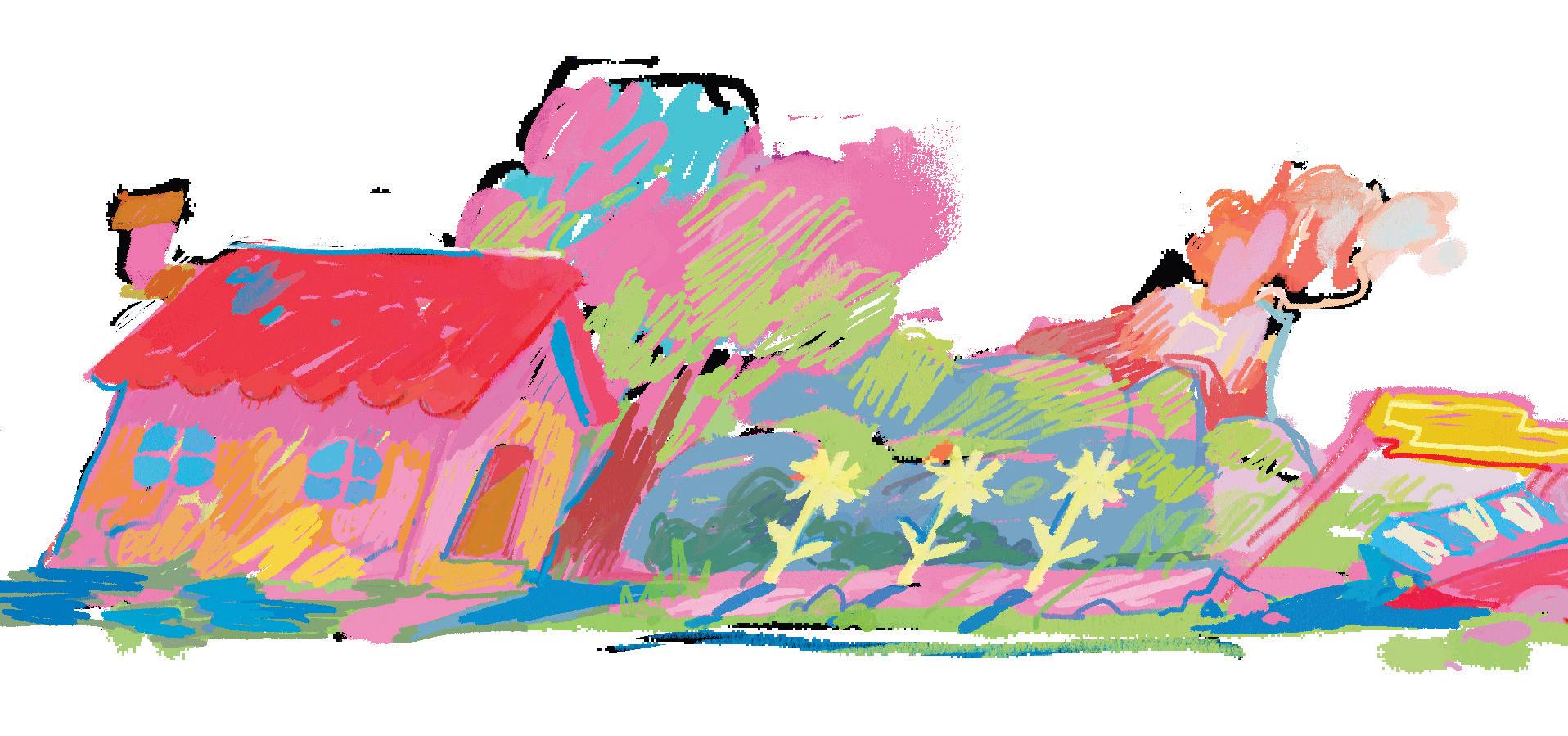
In fact, browser games in general were in decline long before Flash shut down: aside from requiring significant capital to build and maintain, mobile gaming was fast overtaking the browser as the most popular children’s entertainment format. The children who made up the player base were growing older and leaving the platform in droves. In 2013, Moshi Monsters’ parent company Mind Candy reported that its revenues fell 34.8 percent from £46.9 million in the previous year to £30.6 million due to a drop in online subscriptions and resource-intensive attempts to develop mobile-friendly content. As the tablet replaced the computer, the age of online children’s worlds came to an end.
+++
My mom used to take me to the neighborhood Jo-Ann’s every year to buy fabric for my Halloween costumes. When it closed this year, I
encountered the disconcerting feeling of defamiliarized space, the onset of estrangement: the place I knew, the object in its truest form, was different from the place that now existed. We attended the closing sale. We walked around the store with a handful of other people—old ladies, another mother-daughter pair, a family with small kids—and felt a community with them, as if we were all scavengers descending upon the same fallen animal. It was to be replaced by an Aldi. The store moved, suddenly, from reality to memory. It was disturbing to think that one day—maybe soon—I might feel this way about the entire world, and be lonely.
My discovery of Moshi Monsters Rewritten (MMR) almost felt like a direct response to this sense of loss elicited by the changing physical landscape. Its antidote to the “lost-ness” was a remarkable sense of “found-ness,” in the form of a fan-rewritten reboot of my childhood world. When I downloaded it, I was startled at how true to the original it was. (The fan rewrite of Pixie Hollow, by contrast, is extremely limited, only allowing for users to customize a fairy and explore a single setting.) Down to the soundscape, MMR was an exact replica. The loading screen features the Moshling Iggy chasing the cursor around, accompanied by a crisp, evocative chomp upon capture. The map locations—
The Port, Ooh La Lane, Bleurgh Beach—blink with animation and interactive features: clicking on the monster hiding above an archway elicits a giggle and a wave. The Flash mini games in the Moshi Amusement Park work flawlessly. It was just like stepping into an old dream. It struck me that even the absurdity of the Moshi aesthetic—worms bursting out of the animated teal lake; Moshlings based off of an illegible mix of animals, objects, and shapes; a purple Cyclopean tree bearing a glittering, searchlight gaze—is, in its way, perfect for our present time. It echoed the absurdity of our environment in the digital age, where it’s inevitable that we get our grip on technology just in time for it to change, where few things in the immaterial digital sphere feel as stable as the old Jo-Ann’s.
This was, by far, the most successful project of its kind I had encountered. MMR is a fan-made and independent recreation of Moshi Monsters that is not affiliated with Mind Candy. It’s available for free as a desktop app on MacOS, Windows, and Linux. Unlike a physical Jo-Ann’s, it seemed like it was possible to reach into the past, grasp it firmly, and bring it losslessly, perfectly, into the present.
But not without a significant amount of time and effort. Making a fan rewrite of a defunct online world is a task that demands programming knowledge and detailed familiarity with the original online world. My investigation into how the MMR team created the app proved
to be frustratingly opaque, as no one had really documented the process, and those directly involved with the project and its small existing community were hard to reach. However, I found some commonly known approaches the team probably used.
One common method is to create a new version of the online world using a different platform. Many fan rewrites are created using a combination of HTML5, JavaScript, and other actively developed and widely supported web technologies. In this context, HTML5 is used as the markup language to display the website’s visuals, while JavaScript and other web technologies are used to add interactivity and animation. (The original Moshi Monsters ran on basic HTML and Adobe Flash Player.) MMR also uses the tool Nativefier to package the website into a standalone desktop application. The development team of MMR most likely obtained the necessary data to fill out the online world by scraping (copying the data from) the game’s original files, which are currently available to download online as SWF (Adobe Flash) files.
This is where the legality of fan rewrites of defunct online worlds can be controversial. While the information might be publicly available, the Moshi Monsters game files are copyrighted by Mind Candy. Rewrites usually circumvent this by ensuring that they are non-commercial projects created for the purpose of preserving a piece of cultural heritage, and thus considered “fair use” under copyright law. Although MMR has collapsible ads in the desktop app, suggesting that the project is generating revenue, it might still be protected if the ads are being used for a purpose other than financial gain—for example, if the revenue is put toward hosting the app or other costs related to the development and maintenance of the game.

That these fan rewrites exist in a legal gray area helps explain why every user is a Moshi Member in MMR, with full access to parts of the game that were formerly hidden behind membership paywalls. There are (finally!) no restrictions on all the various types of play that are possible in Monstro City. This feature adds to my feeling that these fan rewrites are special, miraculous, that they can rise perfectly from the dead, but in a far more accessible, democratized, equitable version of what they once were. (I was never a Moshi Member until now.) Unlike Google, my data isn’t being harvested and sold. Unlike Twitter and Instagram, the platform isn’t optimizing itself to keep my attention, or trying to get me to spend real money. These rewrites are a rare case of something on the Internet feeling right to me—fundamentally, existentially, even spiritually high-quality, and yet totally free. That they exist in a legal gray area seems to have put the user into an extraordinary sweet spot.
And, indeed, MMR is technically imperfect. There is such a thing as a lost file: several minor features didn’t quite make it to the present, like certain quests, cut scenes, and the mysteriously, permanently roped-off Food Factory. A lost file is an absolute hole. It made me begin to ques-
tion the “purity” of the game, signaling that even the most compelling returns to the past are false. +++
Ten years before Moshi Monsters, another sensationally popular children’s game based on pet collection and social interaction swept the globe: Pokémon. Cultural anthropologist Anne Allison argues for a postmodernist interpretation of the Pokémon economic system, which she calls “Pokémon capitalism.” This system is defined by a core contradiction: while its world relies on the logic of the noncapitalist “barter economy” (Pokémon trading), its objective is one of acquisition and accumulation, and its relationship between player and Pokémon is characterized by the capitalist overtones of control, dependence, and ownership. It also conforms to a preexisting market economy—and yields the game’s corporate owners tremendous monetary profits.
My term “Moshi capitalism,” then, describes the specific form of capitalist fantasy that arises when, under the legal conditions of a non-commercial fan rewrite, the game is forbidden from pursuing any form of profit incentive. The Moshi world represents a dream economy where the goods are great (the Black Pearl of the Potion Ocean! a tessellating silver egg! and more), and, for an extended initial period, capital is effectively limitless. The use of one-time secret codes to reap Rox in large lump sums of up to 1,000 is encouraged. There’s even a list on the official website. I kept thinking that there must be something wrong: a mistake, or a catch. It felt like I had discovered a get-rich-quick scheme that actually worked. The biggest obstacle in the game is luck—in the pursuit of planting the right combination of seeds to attract rare Moshlings. In short, you can get everything you want. And everything is really good.
The coupling of capitalist fantasy and nostalgia merges to create a uniquely appealing media object. In contrast with the current digital entertainment landscape dominated by social media forms that often relegate the user to the non-agent viewer and offer a highly curated and algorithmic user experience, MMR feels freeing, playful, fresh. Its point is to embody you. It recalls endlessness and wonder. It allows a user to vanish into the impossible, dream-like consumer landscape that existed briefly during childhood within these online worlds, a landscape that at least promised that you could have, and be, anything. It’s important to note that while the aims of the internet of the past may not have been any less capitalistic than the present, its methods were less refined and less pervasive. Since Moshi Monsters predated the widespread use of sophisticated algorithms online—there was never a concept of data-based personalization in Moshi Monsters or any of its contemporary worlds—its rewrite also feels like a unique place on the Internet where it is possible not to feel constantly observed. It was a feeling I wasn’t even fully aware of until it lifted. Once I realized this, I felt an almost heady sense of relief.
Its appeal is also that its form of dream capitalism is detached from most of the violence associated with consumption under late-stage capitalism: no resource exploitation or environ-
mental damage; no scarcity or homelessness or inequality. Just pixels. But here is the subtle message of the lost file, easy to miss under the seductions of consumerist fantasy and nostalgic escapism. The game is a fantasy of escaping the violence of capitalism online, and nothing more. The game conditions us to desire what we should desire under its system: a steady accumulation of capital and private property. A comfortable existence in a city built upon the labor of the fictional subaltern class of Glumps. These Glumps figure into the canon, which is mainly expressed through the story-based Super Moshi Missions, as round, ugly minions of the world’s principal antagonist. They are also shown in the background of game landscapes working at the candy mines and at the electric plant. The rewrite’s fantasy doesn’t dream its way out of the violence of labor exploitation and the underclass—despite having the freedom, and the incentive, to do so, simply by being unaffiliated with the original company.
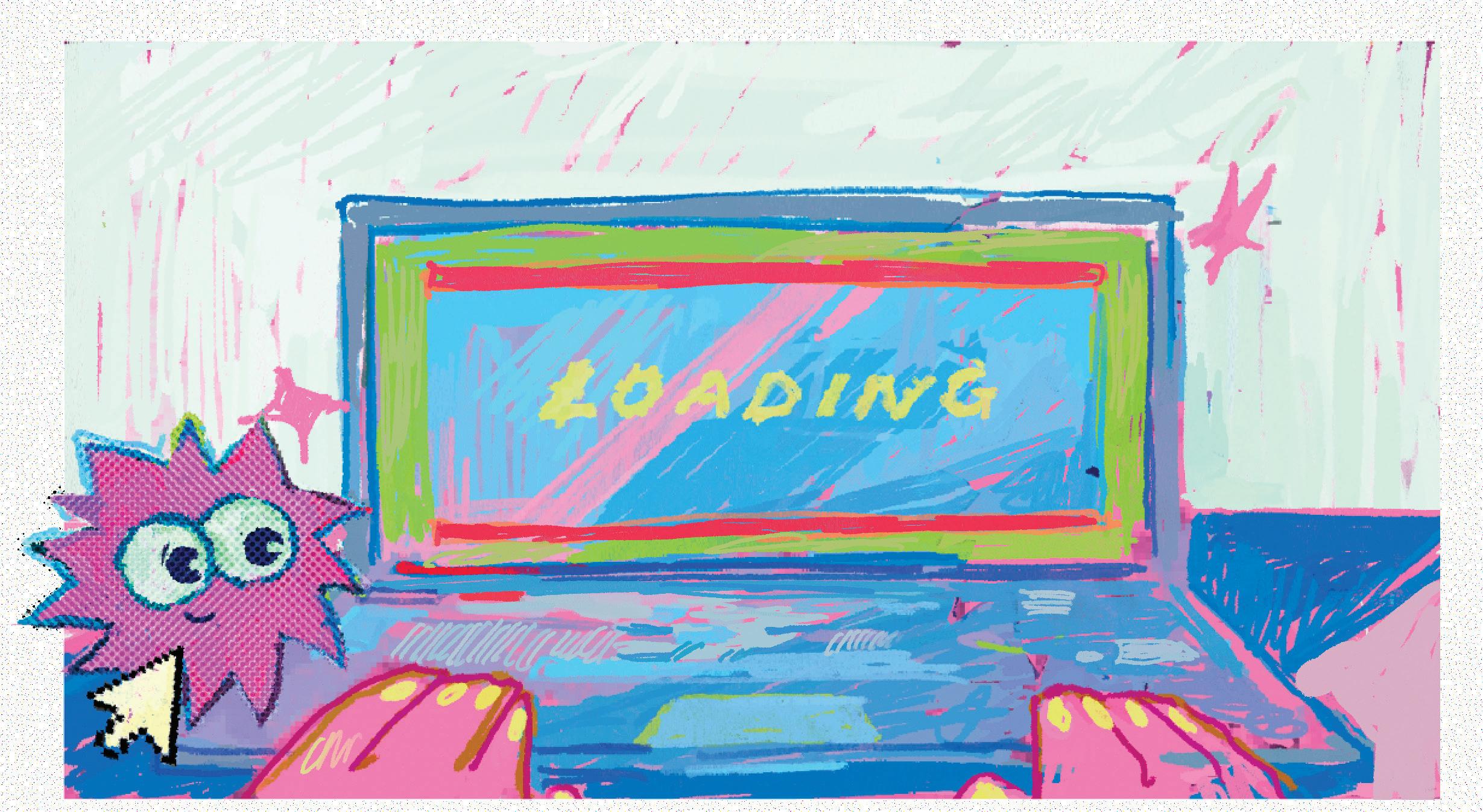
The original world under Mind Candy had incentives to maintain the game’s canon: it was their commodity. The fan rewrite has different incentives to maintain the game’s canon. It’s possible to transform the canon by allowing users to create their own storylines and even their own avatars. However, fan rewrites largely give up this freedom, instead seeking to maintain the old world and its logic as by definition a nostalgia project. We have powerful emotional and psychological attachments to capitalist systems. We choose nostalgic dreaming of the past over claiming the freedom to transform the future. While community members have, in the past, added custom goods such as Star Wars: The Clone Wars posters to Moshi stores, the canon is otherwise painstakingly reproduced and maintained.
So, while it seems strange that the developers would include such a detail in their fictional, pixelated city for children, as essayist Sam Adler-Bell wrote in a recent analysis of video games and capitalist fantasy, “Games, like all entertainment products, shape us into the sort of
subjects required by capital’s present.” The original Moshi Monsters worked to inculcate children into futures of wage labor and consumerism. Its rewrite attempts identical aims under a thin veil of escapism. All of this pleasure serves its ideology, showing us the possible rewards under capitalism and defining our goals under its demands. Thus, MMR’s goal to bring something back from the dead restates, and strengthens with repetition, the exact capitalist systems it seems to defy. Fan rewrites stop short of being quite as revolutionary as they seem because, by definition, they focus on replicating the past. And, indeed, capitalism is flexible in that it allows for its own multiplicities. It’s possible for games and their related media to have ambivalent relationships with capitalism and still perpetuate a capitalist logic.
It’s obviously not true that everyone who played Moshi Monsters as a child, or even plays the rewrite now, is an obedient and undiscerning servant of capitalism. But as our appetite for nostalgia grows and more physical and digital structures begin to fall into our past, the message of the lost file, the absolute hole, sits and waits like a judge at the Underground Disco.
+++
The existence of this model, however, may suggest new and hopeful possibilities for the creation of entertainment projects that enact noncapitalist forms of labor. It’s incredibly striking that absolutely no one is currently profiting from a game that was painstakingly and expensively developed, for years, by a wealthy corporation (at least, not anywhere close to the amount of profit it could, “should,” be making). This is a stunning feature. It challenges every expectation we have for what types of relationships can exist between user and game. The model makes space, maybe just for a moment, for the possibility of publicly available, democratized, non-monetized media objects that are carefully created and designed to be valued, and valuable. This breaks the law of commodity exchange:
the value of a product should, under traditional capitalism, reflect, or refract, the value of its labor. Is this genre of product unique? Are fan rewrites lucky exceptions? Or does the internet still contain utopian possibilities outside of capitalism? Even if not, there is still something extremely powerful about experiencing this format. It contains echoes of care and refreshment that, in our increasingly atomistic and disembodied world, I never even knew I missed.
+++
In the beginning, I opened the desktop app. I created my monster. I assigned him colors and a name. I entered the universe and traveled into the virtual world of yesterday.
The biggest surprise was still waiting for me. When I logged on for the first time, I was astonished to not be alone. MMR felt as populated by users as the original! Even better, the users I encountered were mostly women between seventeen and twenty-nine. What I had happened upon was an entire world of young women escaping together, impossibly, into the simplicities of a collective childhood where we all played with the same toys. We were landing back in another age, one in which the Internet felt like a playground built just for us—not a site for domestic terrorism, before the endless scroll, before any of us knew the anxiety of imminent death by climate change, before mass surveillance, mass disillusionment, and the attention economy. It was just like entering an old dream. It feels like a miracle to reach into the past and find everybody there.






An English library filled with stacks of old volumes, decorated with paintings of old, white men. At the center is a dramatic confrontation— or rather, a moment of passion—between a British aristocrat and an Indian woman (at least in appearance). Earlier, we watched the aristocrat teach the Indian to shoot. Even further back, the woman was shown listening to the aristocrat’s conversation with his friends, in which he speaks of his requirements for a wife as if she’s a commodity.
These are some of the vivid scenes in the extremely popular second season of Shonda Rhimes’s Bridgerton, a fantastical, Regency-era drama which has been praised for its diverse casting. This season follows the enemies-tolovers storyline of Kate Sharma and the Viscount Anthony Bridgerton. While I was watching these scenes, I saw the complex love-hate affair between Anthony and Kate as something entirely different from what the creators had intended—a representation of post-colonial India’s relationship with British influence, in particular the English language that the British introduced to the Indian colony.
Ever since I came to America for higher studies, I have been wondering why I feel such a sense of pride that I can speak proper English—I even enjoy impressing others with my vocabulary—when I feel little to no sense of shame that I am barely fluent in my mother tongue, Hindi. My entire education has been at an international school where I studied everything in English. Funnily enough, my second language was Hindi. This was despite the fact that my grandmother had done her master’s in Hindi literature. Her vocabulary was excellent, as was my mother’s, who had studied at a Hindi-medium school.1 Yet my mother, despite being extremely well-educated, to this day feels nervous sending text messages to friends in English, always checking them with me as if she’ll be thought of poorly if there is some grammatical error. Why was English omnipresent in all of our actions? I never thought I would find the answer to this deeprooted identity question in the sexual extravaganza that is Bridgerton
Obviously, Bridgerton—an adaptation of Julia Quinn’s light-hearted, steamy, historical romance book series—is not really a commentary on colonialism, even with its progressive casting choices. The first season didn’t even feature cast members of Indian origin, as it focused on the love story of Anthony’s sister, Daphne. But watching the second season prompted me to reflect on my own relationship with my country’s colonial past and its enduring effects.
I first started thinking about these colonial reverberations when Edwina Sharma (Kate’s sister) was declared the “diamond of the season” by the Queen, who tended to bestow this title on her hand-picked favorite amongst the ladies of the British aristocracy, or the “ton.” Anthony’s subsequent determination to marry the diamond reminded me of Britain’s possession of India for its “diamonds”—in other words, its riches and resources. In fact, India was called the Jewel in the Crown.
I saw a parallel between the way Anthony sought to possess each of the Sharma sisters for different reasons (Edwina for her social status and beauty, Kate because he was attracted to her) and how England had conquered India all those years ago. Similar to Kate, India was an enticing prospect for the British. Kate and Anthony’s power dynamic certainly reminded me of the struggle against colonialism. India, like Kate, who constantly countered Anthony’s attempt to court her sister (and later seduce Kate), resisted and rebelled against British rule for centuries.

Even the ending of the show featured an unequal relationship. In Anthony and Kate’s marriage, Anthony controls the purse strings while Kate, who had lived in a family of limited means before, has little financial independence.

+++
This is where the parallel ends. Unlike Kate, who submitted to Anthony’s charms, India today is an independent country with its own trajectory. Yet the knowledge that my country is free did little to comfort me, as I felt that we retained some of our colonial links in subtle but disturbing ways. In my own experience, the most pervasive colonial effect that is often overlooked is the British’s influence on our language. Much like Kate and Anthony’s entanglement, Indian and British affairs seem to be intertwined
permanently because of the power the English language has over the Indian population.
Being proficient in the English language is a requirement for high-ranking jobs in India and a symbol of the wealthy urban upper class today. It extends beyond symbolism, determining classes’ upward mobility in India: speaking good English is the key to success in India’s professional field. A 2011 study conducted by the Lok Foundation and Oxford University proved that 41 percent of the rich in India could speak English while fewer than two percent of the poor could do the same.
I have seen this dynamic through my own experiences with the Indian education system. Schools are divided into two classes: the government schools usually are of poor quality and rarely teach English properly, and the private (often international) schools are Englishmedium. This hierarchy extends to higher education in India, as well; prestigious universities like Indian Institutes of Technology and Indian Institutes of Management use English as their primary mode of instruction. When my father studied at such an institution, the Indian Institute of Technology, he realized he automatically had an advantage because he had been taught in English-medium schools, while his friend who had been taught at a Hindi-medium school really struggled, and had to take extra classes to improve his English so that he could comprehend the mathematics and physics he was taught there.
In fact, most Indians operate in two realms: the domestic realm is where they speak the mother tongue, and the formal, educational realm is where they use English. Of course, English is a lingua franca—a language historically meant for trade and work-oriented purposes. But that doesn’t explain why India, unlike other countries, has class segregation based on proficiency in the language and accent. The dominance of English is primarily an urban phenomenon; in cities, getting a good education and job requires English proficiency—a supposed indicator of both intelligence and social status. This is not an indirect consequence of colonialism, but a conscious, direct one. In 1835, a member of the Council of India, the imperial legislature in India under the East India Company, Lord Macauley, promoted the idea that all education in India should be taught in English. Macaulay’s main position was that Indian languages like Sanskrit are not strong enough modes of communication. His argument eventually led to the passing of the English Education Act, which established an education system rooted primarily in English, and which has led to native tongues being forced out of
academic and professional contexts today. My father explained how this Macaulism persisted even after independence. He told me that attending an English-medium school had deeply ingrained the English lens into his mindset. He described the elitism of English-medium schools in India—most of them charge more than their non-English-medium counterparts, so that having English proficiency became a way to signal one’s rise in the socioeconomic pecking order.
Anglophones still look down on non-speakers as if speaking excellent English is representative of competency. Perhaps the biggest consequence the British are responsible for is the death of pride in our national languages or mother tongues as means of communication.
It’s not just the technically linguistic aspect of Indian education that is the result of colonialism, but everything the language entails—the British cultural force that overshadows traditional practices. Similar to how Kate married Anthony and stayed in England, the reverence with which Indians treat the English language is suggestive of an abstract marriage to Britain’s culture. I have heard from friends and family how education in English-medium schools, especially Christian missionary schools established by the British, promotes Western culture. For instance, pupils are encouraged to eat food in the Western way: with a fork and knife, instead of the Indian way of eating with your hands. Even to this day, these schools have a startling amount of Christian imagery and reference to Christian ‘moral science’ or ‘history’ that many claim impose a Western view of everything, including Indian history itself. My father shared that at the convent school he went to, British rule was glorified—as if India had no governance before, and needed to be ‘uplifted’ by the Anglo-Saxon race. Convent schools aren’t as conservative now, but this example illustrates how the dominance of the English language has a cascading effect— it also leads to the promotion of the English perspective and culture over Indian traditions, especially in institutions with a colonial past.
Clearly, the English language’s influence on India is all-encompassing and, at times, oppressive. This doesn’t mean that one native tongue can unite India, as Prime Minister Narendra Modi seems to think reflected in his decision to convert all medical textbooks to Hindi. The plurality of languages we speak renders that impossible: South Indians, like Tamilians, do not even speak Hindi. It also isn’t practical given that a large part of education, including medical education, has been taught in English.
This familiarity is partly why our relationship with the English language is so multi-faceted and ambiguous. Despite our issues with it, in some ways, English serves as a unifying presence in India. After independence in 1947, there was much talk about making Hindi the national language in India, but that incited a violent protest from those in Tamil Nadu. The compromise was that English also became an official language; today it is arguably the de facto national language—one that, while passed through colonialism, has evolved into a bridge between the different parts of India.
And it’s not as if India hasn’t had its own effects on the English language, in the same way that Kate influences Anthony’s growth as a person. She helps him face his fears and insecurities about his father’s death, even as she lets some of the more problematic aspects of his behavior (like his keeping mistresses) slide. Similarly, lots of Indian words have found their way into English—bangle, bungalow, karma, jungle, etc.—reflecting an integration of different cultures. I take pride in our additions to the English language. They show that even under colonial oppression, we made our mark. So much so that Taylor Swift uses the word “karma” in her songs. Today, our language is heard by the whole world.
So, quite interestingly, the Kate-Anthony dynamic between India and English, while unequal, isn’t completely one-sided, due to our contributions to the language. However, we’d do
well to remember that colonialism wasn’t a love story like Kate and Anthony’s. As critic Sashi Tharoor argues, forgiving colonial rule is not the same as forgetting the traumatic experience India underwent as a colony or overlooking the often degrading impact it has had on our national dignity. I still see that impact in the special status English receives, in the advertisements for lightening skin cream, and in Bollywood’s promotion of light-skinned heroes. Implicit Anglo-Saxon mindsets prevail; they remain embedded in our psyche—subtle, but puissant. +++


confused about what language we are supposed to speak? This confusion arises from the ambiguous aspects of the post-colonial identity, which involves a perpetual conflict between the desire to stay true to our traditions, but also an inability to completely rid ourselves of the linguistic hierarchy established by the British.
Don’t lose faith. There is a way to reconcile the two. Perhaps future shows will show Indian culture in all its complexity and brilliance. More importantly, there is a way to acknowledge English’s influence on our country, while at the same time, not thinking any less of our own languages. We can’t change our history, but we can change our future—one where students adept in native tongues are not barred from elite education, where knowledge is offered in all our languages so that people can choose according to their comfort. Who knows? This may ultimately lead to the birth of a multilingual generation, which would be a true force to be reckoned with.
It is these implicit patterns that led me to cynically view Bridgerton as a glossy attempt at displaying diversity instead of representing cultures accurately. The show is progressive in its vision and I certainly don’t expect it to comment on colonialism; it is anachronistic, after all. But a few Indians have noticed the lack of flashbacks showcasing the Sharmas’ lives in India. Another criticism of the show was that it inauthentically portrayed Indian languages. The origins of Kate and her family were a confused
To help myself stay hopeful, I always think back to one bright, sunny afternoon. My family and I were driving in the heart of the city I live in, Bangalore, and I pointed out a particularly pretty red building to my mother. She informed me that the picturesque architecture of the building was Victorian in style; it had been constructed in colonial times. Yet, it merged perfectly with the hustle-bustle of the typically busy Indian street in which people carried on with their lives, indifferent to it. Such buildings have unobtrusively become part of the Indian landscape. I like to think of it as emblematic of our messy, but ultimately triumphant history—it embodies a dream for India to neither shed its past nor be ruled by it. I think English can be that building—a beautiful language that is not idolized, but among the many beautiful languages in our country. If there’s one thing Bridgerton got right, it’s the diverse vibrancy of the Indian color palette that should also extend to our forms of communication, so that English doesn’t play the authoritative Anthony to our Kate.
NAVYA SAHAY B’26 concentrates on English Literature.
1) Why do skunks celebrate Valentine’s Day? They’re very...


2) What’s the best recipe to make on February 14? A hug and a...
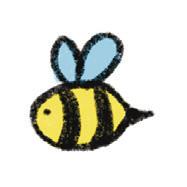








3) What do you call a Valentine’s Day gift that doesn’t arrive on time? A...











Bouquet = A
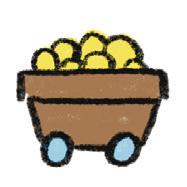




Cupid’s Bow = C





Kiss = E










Single = H
LETTER BOX
Courtship = I




Embrace = L
Sweetheart = M








Date Night = N
Hugs & Kisses = O
Love Letter = Qu
Heartwarming = S
Be Mine = T

ebruary 14 is right around the corner and love is on the brain! There’s just one problem. Because this is the Indy, my editors told me that I had to frame this column as an anti-capitalist critique of Valentine’s Day. They also said that if I wanted to make pop culture references, they would only permit allusions to French New Wave cinema. They warned me that if I didn’t start adhering to the Indy’s mission statement in my column, they would replace Dear Indy altogether with a new section called Accessible Critical Theorist of the Week. Readers, I was faced with a tough choice. But I’m willing to put my career on the line to help my readers in the best way I know how. I’m willing to fight for love— and this week’s readers are in dire need of some advice about it.
Thankfully, I’m a highly qualified expert: I’ve seen every rom-com* there is to see, and if the leading guy was really hot, I’ve seen it twice. The editors can spit on me and push me down the stairs of Faunce while invoking the name of Éric Rohmer, but deep down, they know what I know: anyone who knows anything about love learned it from a movie starring Drew Barrymore.

Dear Indie,




Recently, I’ve

Love, Not Quite Unrequited





This would be a fun situation for a will-they-won’t-they arc in a long-running sitcom, but it is not a great situation for you in real life. Liking someone who’s unavailable is hard enough, but having to deal with the roller coaster whiplash of weird mixed signals is even worse, and it isn’t fair to you. If this person really cared about you, they probably wouldn’t be playing wiffle ball with your feelings (I’m not super good at sports analogies, but I mean to say that, metaphorically, they’re bonking your feelings around with a bat in a way that is not particularly impressive because your feelings are sitting right there on a tee anyway). Plus, if this is how they behave while they’re in a relationship, how can you be sure they would behave any better if they were in a relationship with you?
I would steer clear for a while. You deserve to be with someone who is entirely available and entirely not a jerk. If this really is a will-theywon’t-they plot, and if it’s really meant to be, you need to give this person a couple of seasons for character development first. The cool thing is that sitcom characters always get hotter with each season, too.
Have a question for Dear Indy? Submit it here!



Dear Boo Hoo My Life Is So Hard, Shut up! Shut up! Let me go take some deep breaths for a minute and then I’ll answer your question.
Okay, I’m back. Sorry for giving you that pseudonym. As much as your dilemma sounds like a veiled way to brag about being obviously very attractive and having a great personality, I get how this could be frustrating. It would suck to worry about a friendship being jeopardized, or whether or not you’re unintentionally leading someone on. Being a good friend already takes energy and care, so it’s reasonable to assume that being a good friend to someone who might be in love with you (or who is definitely in love with you) takes even more.
Before I go on—I’m not accusing you of being intentionally flirtatious, or blaming any of this on you, but if you’re being intentionally flirtatious it’s your fault and you should stop.
I’m sure, however, that this is not the scenario, and you’re just being yourself. In that case, there’s no real way to prevent people from constantly falling in love with you. Maybe you’re just that beautiful and that charming, which is fine. You can’t control that. What you can control is how you respond to these friends who immediately develop feelings for you. You shouldn’t have to forfeit an entire friendship just because someone is into you, but it’s important to make clear that you don’t feel the same way. If you explicitly communicate your lack of interest and they still want to be friends with you, that’s okay. If not, they were either never really your friend in the first place (which sucks but good riddance), or they know that they need some space from you in order to deal with their feelings (which also sucks, but in a more emotionally mature way). It’s really, really difficult to be stunning, smart, sexy, and hilarious, but I think you’ll be okay. I will be, too, after I go take some more deep breaths.
Dear Indie, The person I really like has a significant other, which sucks. But what’s most confusing is that despite being in a relationship, they have definitely been flirting with
me. I know they’re with someone else, but
it really seems like they’re into me, too. What am I supposed to do with that?
been trying to branch out and make new friends. The problem is that every time I finally get to be friends with someone, they fall in love with me almost immediately. How can I make friends who stay just friends?
Every Saturday in February @12PM: National #FiveFreedmen Book Club Reparations Educational Series
For Black History Month this year, the SoliDarity Community Engagement Group, an organization that supports efforts to educate, empower and uplift the community in regard to reparations, is hosting weekly Zoom calls for people to learn about reparations and how descendants of chattel slavery can become a protected class as ‘American Freedmen.’ Sign up for the free online series here: tinyurl.com/ Reparations-Educational-Series.
Location: Virtual, over Zoom
Monday 2/13 @6-7:30PM: The Womxn Project Project SpaceMessage for Address
Join the Womxn Project to write cards to representatives and senators to let them know the issues you care about! Warm drinks and snacks will be provided. RSVP by emailing volunteer@thewomxnproject.org. Location: Email for information
Wednesday 2/15 @5:30PM: Re*generation February Meetup
Re*generation, an initiative focused on education and working at the intersection of all fields to unite, support and empower people of color will be hosting this meetup featuring speakers Courtney Price, Earl J. Edwards, and Jacques Bidon. The gathering will be focused on empowerment, community building, and celebrating unique perspectives while understanding their impact on the future of education. Food and drinks will be provided. Reserve a spot at this free event at tinyurl.com/ Regeneration-February-Meetup.
Location: CIC Innovation Center, 225 Dyer St. Fl 2, Providence, RI 02903
Friday 2/24 @8-10AM: State of Black Businesses in Rhode Island |
Legislative Breakfast
In Rhode Island, data continues to show that Black-owned businesses experience discrimination, particularly within their process of receiving state contracts. The Rhode Island Black Business Association will be hosting a conversation over breakfast on the impact this has on the state economy and how we can support economic equity for Black business owners. Register your attendance for free via Eventbrite at tinyurl.com/ legislative-breakfast.
Location: Sprout CoWorking Providence, 166 Valley Street Building 6M Suite 103, Providence, RI 02909
Monday 2/27 @3:30-5:30PM: The 1619 Project Film Screening
Join Providence Student Union, a high-school, youth-led coalition aimed at promoting student power, for a screening of The 1619 Project. The film, referring to Nikole Hannah-Jones’ leading essay to “reframe the country’s history by placing the consequences of slavery and the contributions of Black Americans at the very center of our national narrative,” was adapted as a longform collection, book, and curriculum for which Jones was ultimately awarded the Pulitzer Prize.
Location: 769 Westminster St, Providence, RI 02903
Monday 2/27 @6PM: Justice Circle for Women of Color & Nonbinary People of Color in RI
Join Sista Fire RI, an organization focused on building collective power with and by women of color for social, economic, and political transformation. The Justice Circle is the organization’s monthly membership meeting open to women of color and nonbinary people of color living in Rhode Island. Dinner will also be provided. Register at bit.ly/ FebruaryJC2023.
Location: South Side Cultural Center, 393 Broad Street, Providence, RI 02907
Arts
Every Second Tuesday of the Month @ 7:30-9:30PM: UpRiseHer’s Feminist Book Club
Join UpRiseHer, an organization aimed at empowering women, for their Feminist Book Club, which meets every second Tuesday of the month. Sign up to attend here: tinyurl.com/upriseher-bookclub
Location: UpRiseHer, 335 Hope Street, Providence, RI 02906
Friday 2/11 @ 3:00PM: Cyphering While Black: Facing the Music, Confronting the Culture
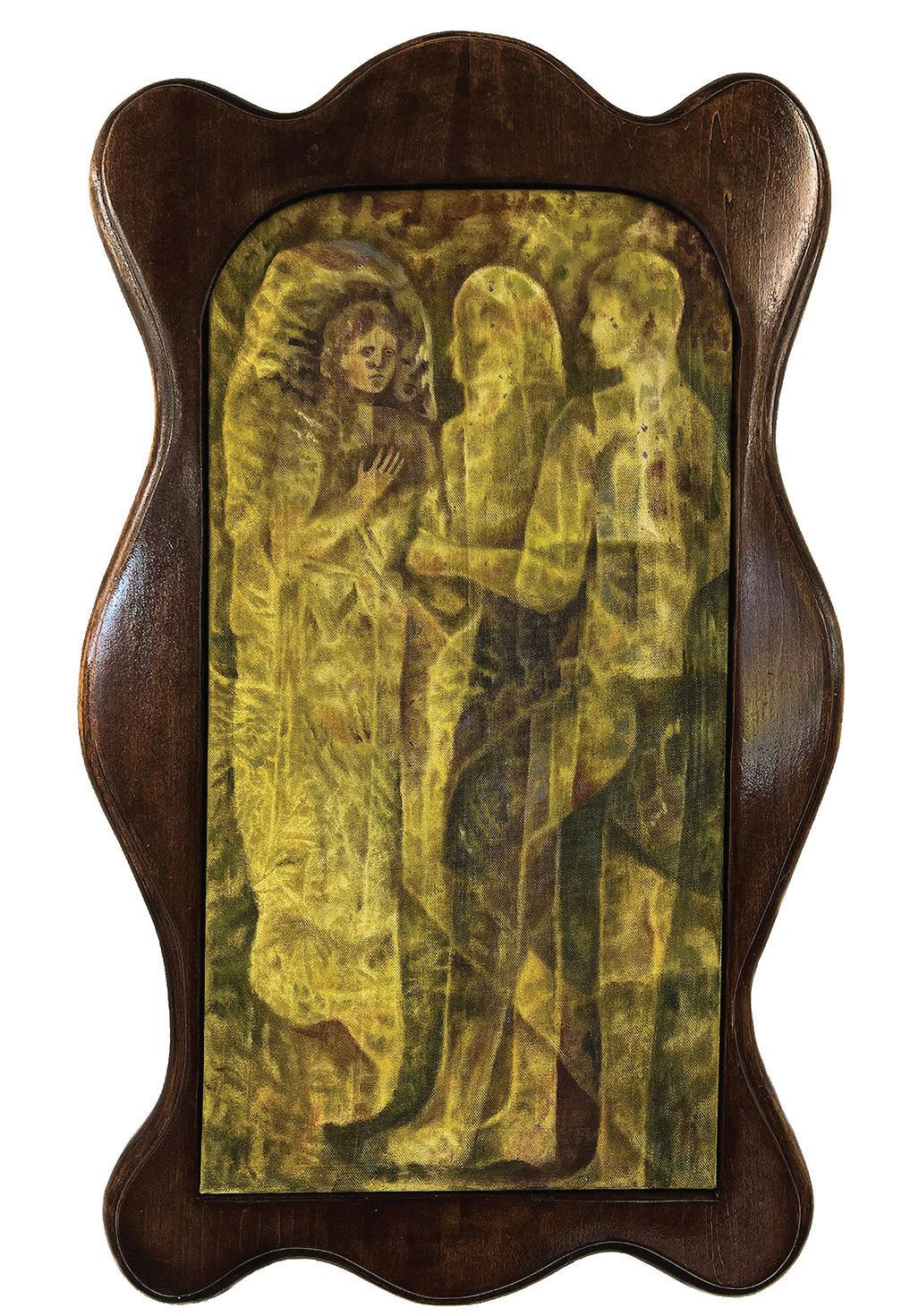
This event, the first part of a speaker series hosted by Brown’s Center for the Study of Slavery and Justice, focuses on exploring the modern landscape of the independent music scene as well as the use of music as a liberation tool. Specifically, this event will feature Jewelry Rap Productions, an independent music collective from North Carolina, and their experience as well as focus on independent artists having to navigate largely white critique and constraints.
Location: Perry and Marty Granoff Center for the Creative Arts, 154 Angell St, Providence, RI 02906
Do you have an event, action, or other information for the Providence community that you’d like to see shared on this page? Email us at indybulletinboard@gmail.com!
Saturday 2/18 @8:30PM: Shade Range
Attend this celebration for trans and queer POC performers. Tickets can be bought in advance for $15 or at the door for $20 and at this link: tinyurl.com/shade-range
Location: Columbus Theatre, 270 Broadway, Providence, RI 02903
Wednesday 2/22 @6-8PM: Clothing Swap
Start off the semester right by clearing out your closet excess & swapping with the community. Bring your unwanted clothes and accessories—in good & clean condition—and find new items! All the leftovers will be donated to a local non-profit organization. Tickets range from $8-12 depending on what you are able to pay, and can be bought here: tinyurl. com/February-clothing-swap.
Location: The Nest, 1155 Westminster St Unit 220, Providence, RI 02909
*Mutual aid is “survival pending revolution,” as described by the Black Panthers. Join in redistributing wealth to create an ecosystem of care in response to a system of institutions that have failed or harmed our communities.
+ Help #ShutDownWyatt Activists Beat Charges!
Donate at https://gofund.me/e775d6c8
In May 2022, four activists with the #ShutDownWyatt campaign—where supporters advocated for the shutdown of the Wyatt Detention Center, a prison in Central Falls, RI—were arrested in Georgia. The Wyatt Detention Center is controversially known for its cruel conditions, such as the instance of the death of Hiu Lui Ng, a 34-year-old Chinese detainee who died while in the custody of immigration officials in 2008 after repeatedly making known to prison officials his pain and illness. Next month, their court process begins, and donations will aid in their legal and travel expenses.
+ Amenity Aid Rhode Island
Donate at amenityaid.org/donate-money
Amenity Aid works to provide hygiene resources to marginalized communities and low-income people in need. On top of serving individuals, Amenity Aid partners with local shelters, food pantries, anti-domestic violence organizations, and other community groups that support underserved communities to distribute hygiene resources.
+ Project LETS Providence COVID-19 Relief Fund
Donate at projectlets.org/covid19
Project Let’s Erase The Stigma (LETS) is working in coalition with various grassroots organizations in Rhode Island to support marginalized groups in our community in the wake of the COVID-19 pandemic. All donations will directly help individuals, children, and families meet their basic needs.
+ Ocean State A$$ Mutual Aid Fund
Donate at tinyurl.com/oceanstateass
Support sex workers statewide, priority given to BIPOC sex workers, trans sex workers, and sex workers who have been impacted during the pandemic.
+ Queer & Trans Mutual Aid Providence
/ Info: tinyurl. com/qtma-pvd

Venmo: @qtmapvd; Paypal: qtma.pvd@gmail.com
QTMA PVD is a small, volunteer-run mutual aid fund for queer and trans folks in the Providence, RI area. They do payouts once per week and have distributed over $80,000 since their founding in June 2020. They currently have over 30 outstanding requests for aid and would appreciate any donations!